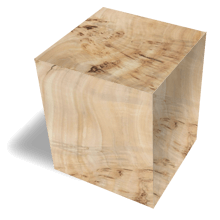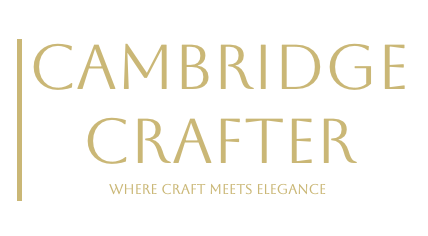
Maple Burl
Maple Burl typically comes from species within the Acer genus, such as Hard Maple (Acer saccharum) or Soft Maple (Acer rubrum), commonly found across North America, with some European species like Sycamore Maple (Acer pseudoplatanus) used in the UK. These deciduous trees grow to 50–100 feet tall with trunk diameters of 2–4 feet, thriving in temperate forests. The burl, a rare growth deformity caused by stress, injury, or fungal activity, forms on the trunk, branches, or roots, often harvested as a prized feature.
The heartwood of Maple Burl varies by species but generally ranges from creamy white to light reddish-brown, often with a golden or amber hue in Hard Maple, while the sapwood is nearly white, blending subtly into the heartwood. The burl’s defining characteristic is its highly irregular grain, featuring tight swirls, curls, and clusters of burl eyes—small knots that create a dramatic, almost three-dimensional pattern. Spalting or mineral staining can introduce darker streaks of grey, brown, or black, adding further contrast. The texture is fine to medium, with a high natural lustre that enhances its visual appeal when polished.
Maple Burl has a density of around 600–750 kg/m³, depending on the species (Hard Maple being denser), making it a hard and strong wood with good stability once seasoned. It’s not particularly durable, with moderate resistance to decay and insects, so it’s best for indoor use unless stabilised or treated. The irregular grain can make it challenging to work, often causing tearout during planing or sawing, but it turns, carves, and finishes beautifully with sharp tools. Stabilisation with resin is common for burls, especially for applications like knife handles or pen blanks, to improve durability in softer or spalted areas. It glues well and takes stains or clear finishes effectively, often showcasing its figuring with a glossy sheen.
When worked, Maple Burl has a mild, slightly sweet scent, typical of maple, with no strong aroma. In the UK, it’s prized for high-end decorative uses, such as veneer for furniture, cabinetry, and musical instruments (e.g., guitar tops), where its figuring creates a luxurious effect. It’s also popular for turned objects like bowls, pens, and small sculptures, often seen in bespoke British woodworking for its aesthetic appeal. The burl’s unique patterns make it ideal for artistic pieces or inlays, sometimes combined with epoxy to highlight natural voids.
Maple Burl is moderately expensive, with prices varying based on the intensity of the figuring and the presence of spalting—exhibition-grade pieces with vivid patterns command a premium. Neither Hard Maple nor Sycamore Maple is listed on CITES Appendices, and Acer saccharum is not considered threatened by the IUCN, though Acer pseudoplatanus is an introduced species in the UK and not conservation-sensitive. The burl’s rarity, as a natural anomaly, makes it less common than straight-grained maple, but its availability in North America and Europe ensures a steady, if niche, supply for craftsmen.
